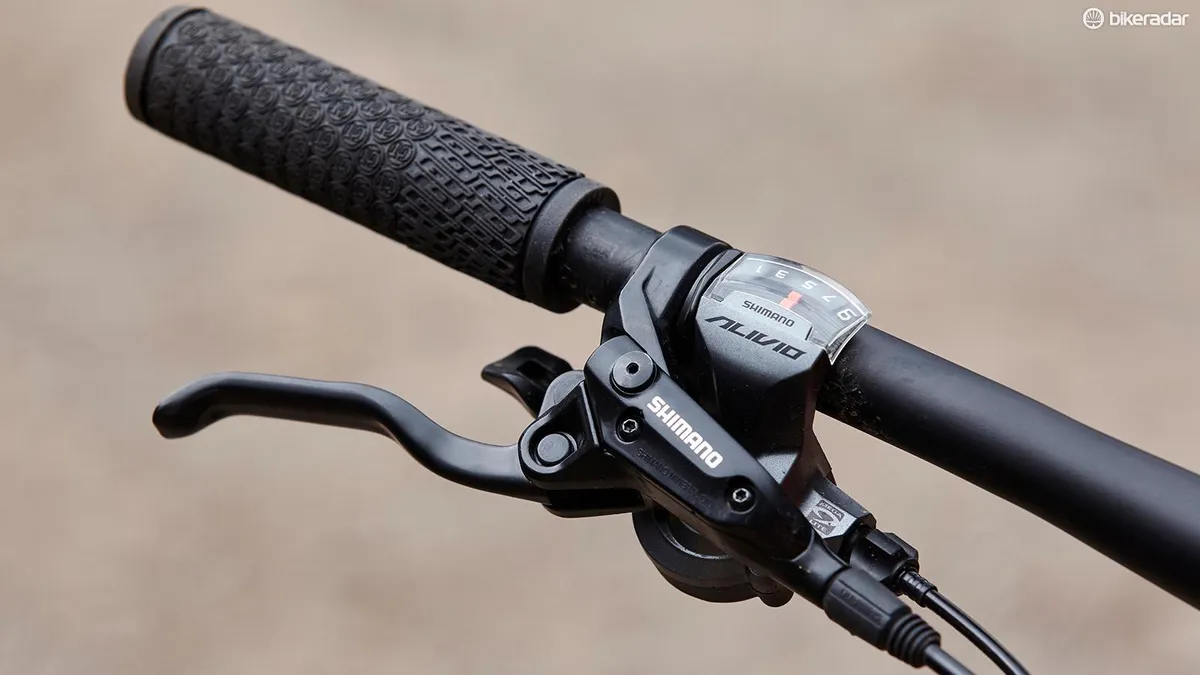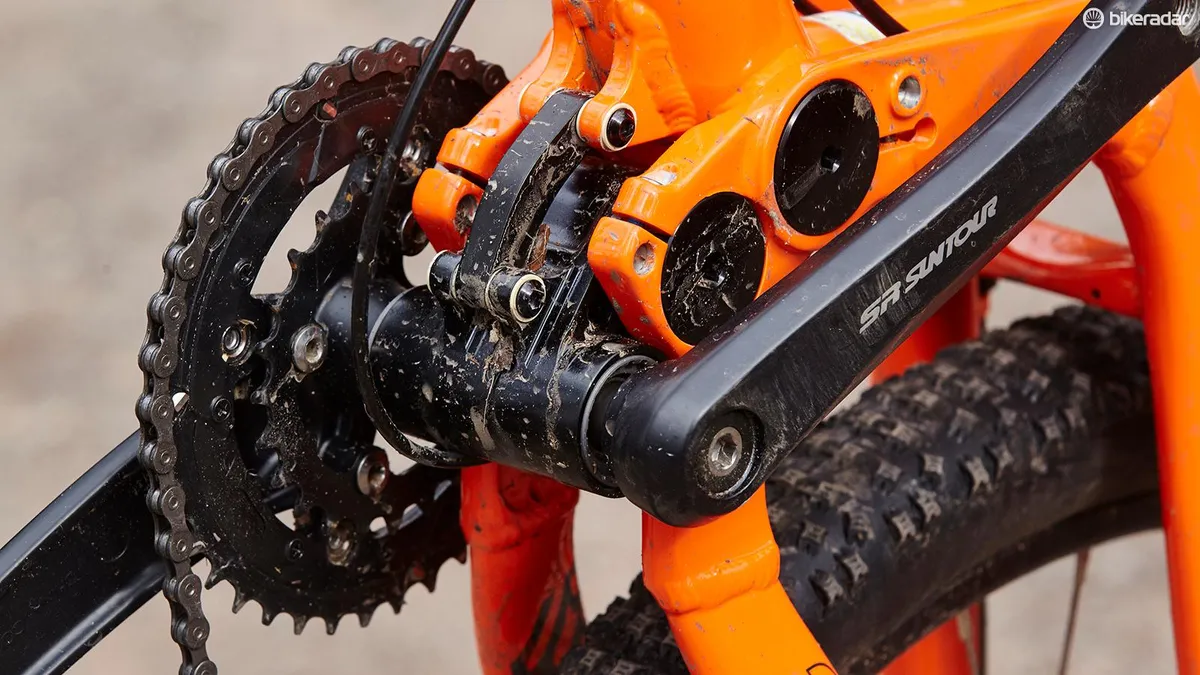GT is one of the few global manufacturers to produce a full-susser at this price – complete with the brand's distinctive Independent Drivetrain suspension. It’s definitely cruisy not crazy in character though, and what you save in money you gain in weight.
No suspension short-selling
GT hasn’t simplified its suspension system to hit a price point, as on some other bikes we’ve tested recently. That’s even more impressive because the I-Drive layout is one of the most complicated around.
A central subsection carrying the bottom bracket (BB) is connected to the front end by a linkage and a central pivot. The rear swingarm then hinges off a high pivot on the mainframe and another pivot on the BB section, with the short-stroke shock driven off the top corner. What that does to the ride we’ll deal with later, but despite its complexity it’s proved an impressively tough system on long-term test bikes.
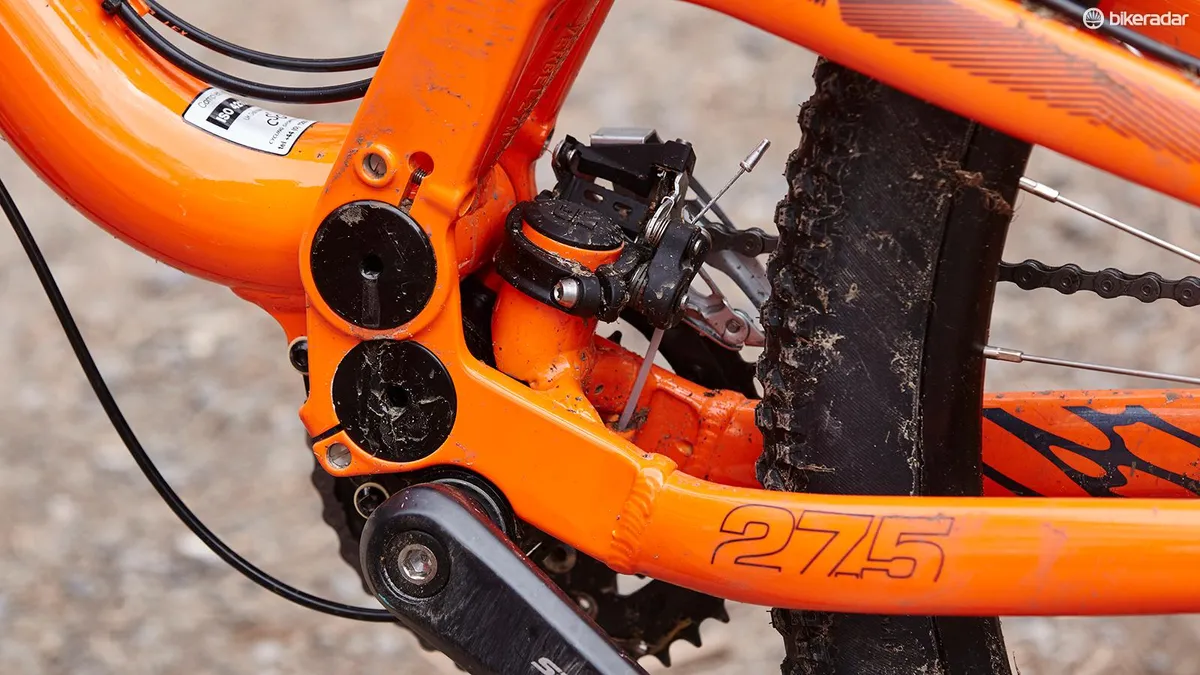
The I-Drive system has proved tough and delivers excellent traction when climbing
There’s a lot of neat detailing elsewhere on the alloy frame, including hollow-backed dropouts and swingarm segments, clamped bearings for simple (eventual) replacement, and a post-mount brake attachment and external cable/hose routing for easy set-up and servicing, respectively. There’s a reasonable amount of mud space around the Kenda tyres too. The extended top tube syncs with a fashionably short stem, but the head angle is on the steep, XC-friendly side, not slacked out for stability.
With a shock (albeit an own-brand All Terra one) and more complex frame adding cost, the Verb’s spec list suffers in comparison both to hardtail price point peers and the best budget full-sus bikes we’ve tested recently.
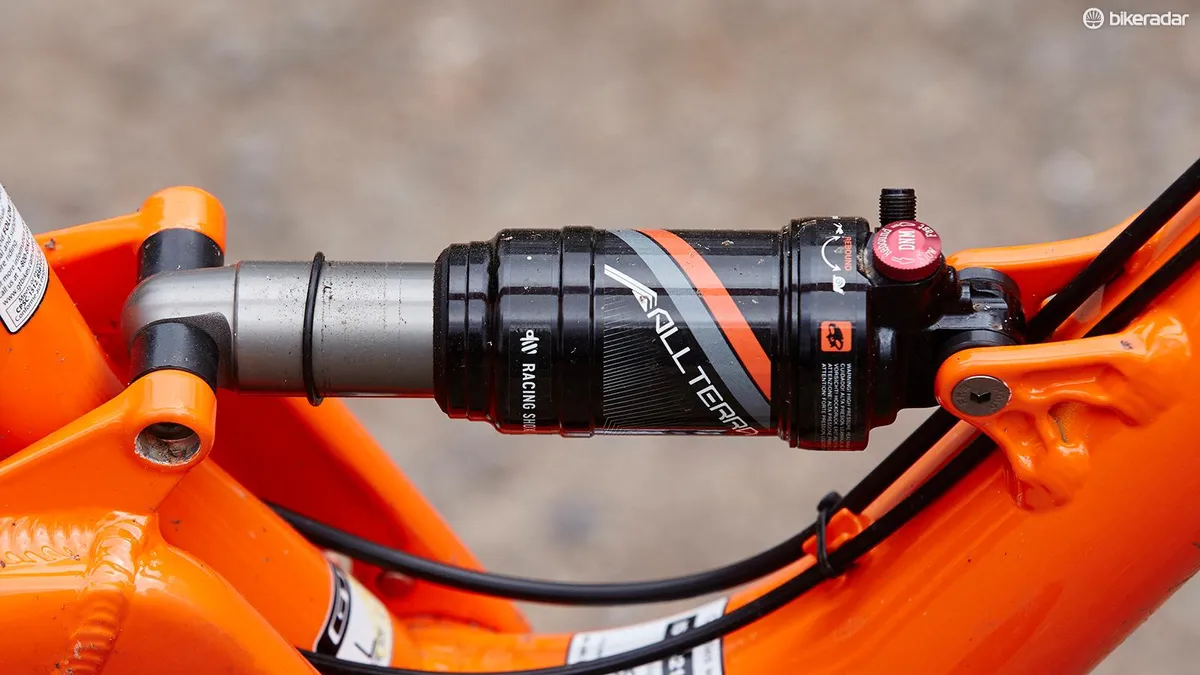
The own-brand shock works well enough
The SR Suntour XCR fork offers limited control over smaller bumps, but we never got more than 85mm (3.3in) of the claimed 120mm (4.7in) stroke. The Suntour double crankset uses a separate square-taper BB rather than a two-piece thru-axle configuration.
The Shimano Alivio shifters only give a choice of nine sprockets at the rear rather than the 10 you’d expect for this kind of outlay, and the Shimano M355 brakes are wooden and uncommunicative. You do get 180mm rotors to boost power though. While the hubs are quick-release at both ends the semi-slick 2.1in Kenda tyres keep the wheels relatively light. Overall weight is very high, even by same price full-suspension standards.
Responsive ride, but not a bike in a hurry
Add this high weight to the soft feel of the skinny-axled cranks and the rubbery chain feeling created by the fluid movement of the I-Drive system, and the Verb isn’t in a hurry to get going, particularly if there’s an upslope involved. But if you’re not fussed about speed, it’s a tenacious climber despite the numb-feeling carcass of the cheap wire-bead Kenda tyres.

The stem is short, but the head angle is steep
That’s because the swingarm pulls backwards as it hits steps, roots or rocks, maximising traction. And because it brings the BB back with it slightly, this movement doesn’t choke your pedalling as obviously as such a mobile back end should. There’s still enough feedback to let you feel how much traction you’ve got through your feet, so it’s easy to nurse what grip you’ve got.
The suspension interaction also pulls the front wheel down onto the ground, which isn’t great for manuals but gives outstanding steering traction on climbs. The relatively steep head angle also keeps the Verb much more obedient when you’re crawling upwards compared with a slacker bike, and the short wheelbase (for a full-susser) makes switchback turns easy too.
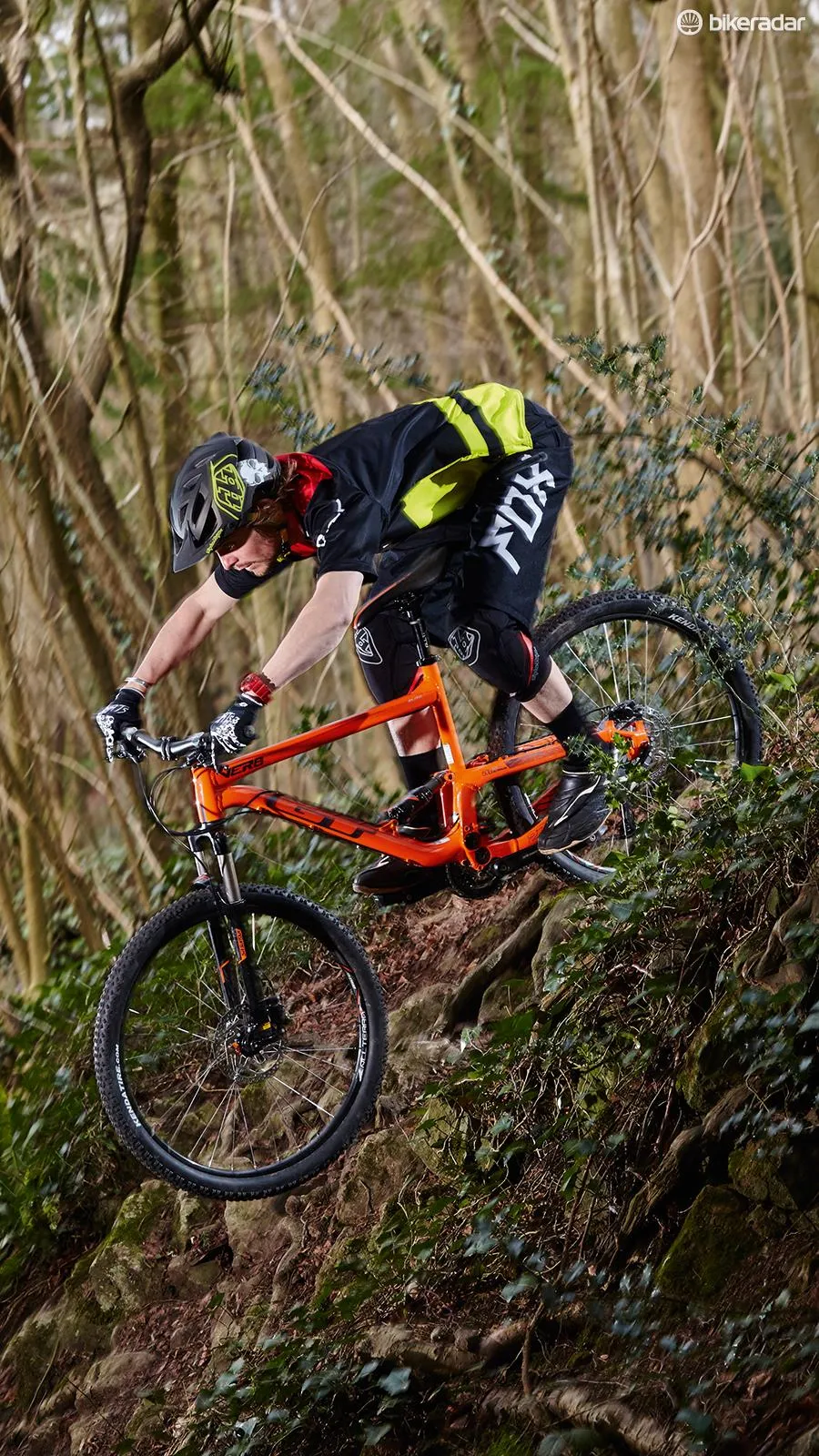
The Verb is a nervous character once you get descending
Once you’re up – or up to speed – and the weight isn’t such an issue, it rolls along smoothly. The rear shock works well once you’ve got the rebound damping set right and the suspension action flatters its ability to carry speed over clattery sections.
Unfortunately this smoothness doesn’t extend to more challenging descents. The steep head angle makes the GT fussy in terms of line holding. Twist from the QR axle fork, the numb brake feel and the slippery and stiff tyres don’t help matters either.
The simple fork internals and 35mm less travel than it should have mean bigger hits slam through unsoftened too. The fork gets out of its depth well before the back end does, and it’s not long before you get battered off line or your arms blow up. Front and rear braking also has a noticeable effect on suspension operation as well as the ability to pop the front wheel up easily, which is something you’ll get used to in time but feels weird at first.
Unfortunately for GT, while this kind of fork and component compromise was once common on budget full-sus bikes, the best of the current breed are equipped far better and have the control to match.

